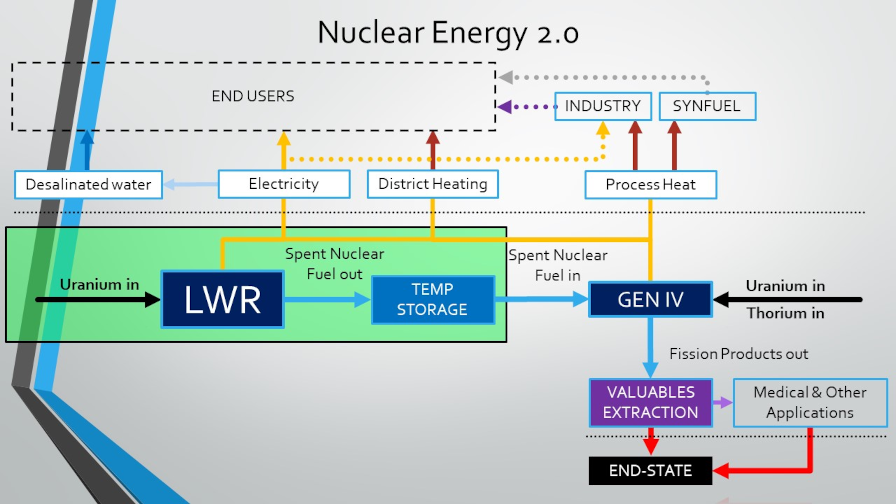08. The government encourages research into the use of nuclear energy for non-electrical processes.
The annual primary energy consumption of the Netherlands is expected to be around 2750 petajoules by 2030 (approximately 750 TWh).30 TNO’s TRANSFORM model calculates for 40 GW of renewable energy in 2030 and more than 140 GW by 2050.31 This results in 140 TWh in 2030 and 490 TWh in 2050 while using a hypothetical capacity factor of 40%.
It is important to note that the TRANSFORM model considers large-scale behavioral change in terms of energy consumption in the Netherlands. It is uncertain whether these models are actually feasible. Dutch society may not be willing to make such sacrifices. It is therefore doubtful whether with wind and sun (even with high penetration of wind & sun as described in TRANSFORM-like scenarios) we manage to fully decarbonize the Dutch economy. This was the reason for the e-Lise Foundation to develop its 'Nuclear Energy 2.0' vision.

In this vision we show that it is possible to develop a cradle-to-cradle strategy for nuclear energy. Different types of nuclear reactors are used for different applications. This includes the production of hydrogen, synthetic fuels, clean drinking water, urban heat, industrial heat, steel production and large-scale chemistry. To make these processes CO2-free, we propose that the Dutch government ask research institutes such as TNO to investigate and ultimately apply the possibilities of [high-temperature] reactors for non-electrical processes in collaboration with market players. This can open a new path to large-scale CO2 reductions and the preservation of fundamental basic industries in the Netherlands and Europe.
30 https://www.pbl.nl/sites/default/files/downloads/pbl-2020-klimaat-en-energieverkenning2020-3995.pdf
31 http://publications.tno.nl/publication/34636734/bgfjKg/TNO-2020-P10338.pdf